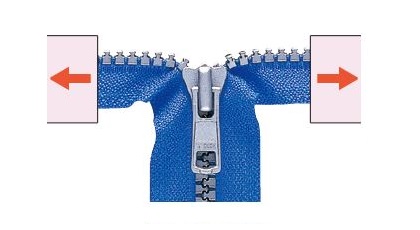
NewsInformation Center
The 5-Step Zipper Test Guide You Didn't Know About
2023/04/23
Zipper Test is a method to test the performance of a website by simulating different numbers of users accessing the website at the same time to evaluate the responsiveness and stability of the website. Zipper Test works by dividing the users into two groups, one group accessing the old version of the website and the other group accessing the new version of the website, and then gradually increasing the percentage of access to the new version of the website until it reaches 100%, so that the performance difference between the two versions can be compared.

The advantage of Zipper Tester is that it can gradually roll out the new version of the site without affecting existing users, while monitoring and tuning the performance of the new version. the disadvantage of Zipper Test is that it requires additional resources and time for configuration and execution, and may encounter some technical difficulties and risks. This article will present a step-by-step guide on how to conduct Zipper Test to help you complete the process successfully.
Step 1: Determine Test Objectives and Metrics
Before conducting a Zipper Test, you need to define the goals and metrics you want to test. For example, you may want to test a new version of your website in terms of loading speed, error rate, conversion rate, etc. You need to choose the right metrics based on your business needs and user expectations, and set reasonable baseline and target values. You also need to identify the user groups and traffic sources you want to test, as well as the testing tools and platforms you want to use.
Step 2: Prepare the testing environment and data
When preparing the test environment and data, you need to make sure that both the old version and the new version of the site are working properly and have the same content and functionality. You also need to configure the routing rules so that users can be assigned to different versions of the site according to a preset ratio. You also need to prepare enough test data, including user information, transaction records, product information, etc., in order to simulate real user behavior and scenarios.
Step 3: Execute the test plan and collect data
When executing the test plan, you need to conduct Zipper Test according to a predefined schedule and traffic ratio. for example, you can start with 10% and increase 10% at regular intervals until you reach 100%. At each stage, you will need to use testing tools to simulate different numbers and types of users visiting the site and collect relevant data and metrics. You will also need to monitor the performance and status of the site in real time and identify and resolve any issues in a timely manner.


Step 4: Analyze the data and evaluate the results
After completing Zipper Test, you need to analyze and evaluate the collected data. You need to compare the performance of the old version and the new version of the site on various metrics and identify strengths and weaknesses. You also need to determine whether the new version of the website has achieved the expected results and whether further optimization or adjustment is necessary based on your test objectives and metrics.
Step 5: Summarize the report and share your experience
Finally, you need to summarize the report and share your experience. You need to write a detailed report on the Zipper Test process, results, issues, recommendations, etc., and report and communicate to the relevant people or departments. You also need to record the difficulties and solutions encountered in Zipper Test, and summarize some lessons learned and improvement measures for better Zipper Test next time.
Previous: What to know about textile testing equipment - Did you know?
N e x t : 2023 India (Bangalore) International Textile Fabrics and Accessories Exhibition



